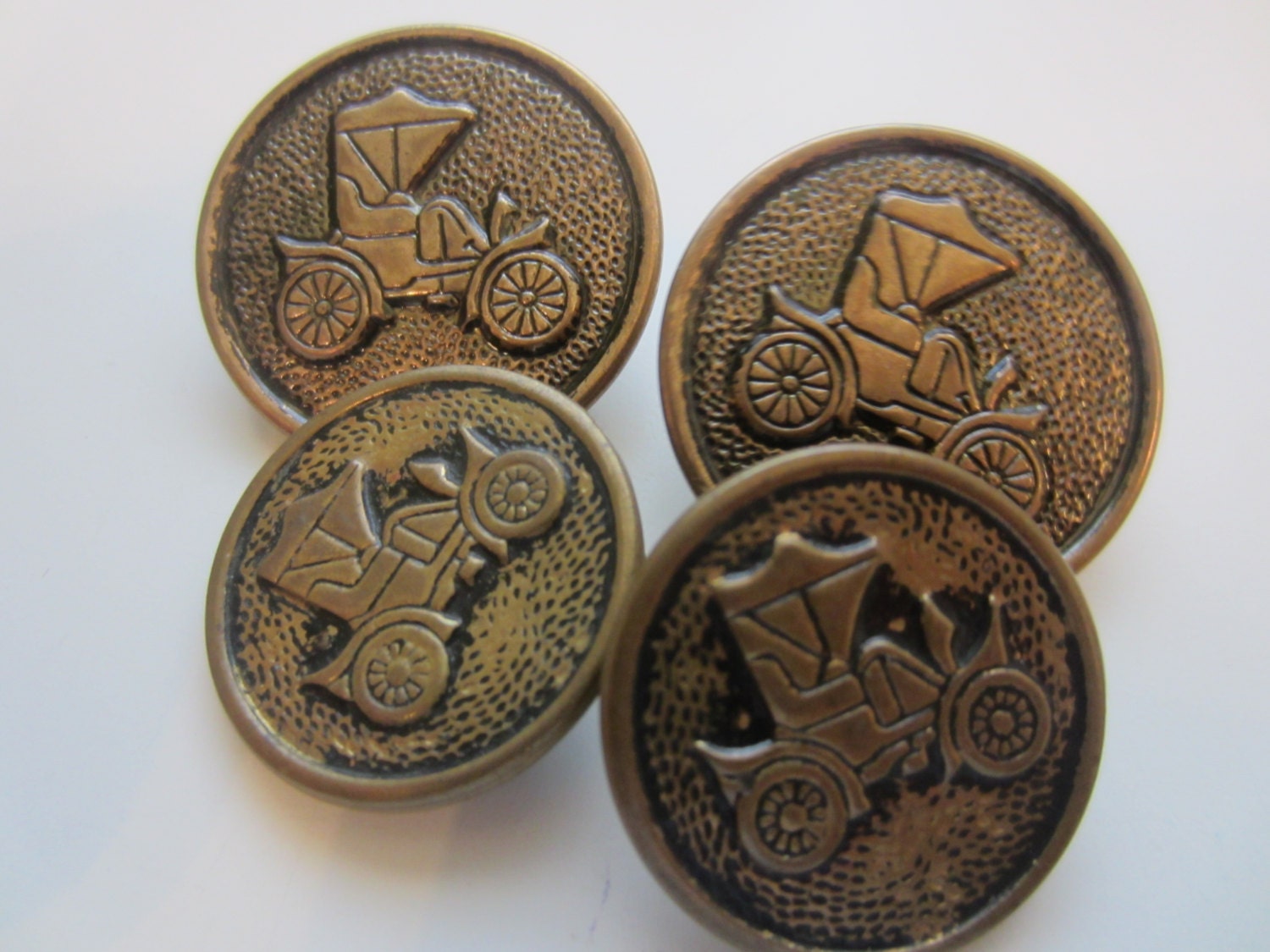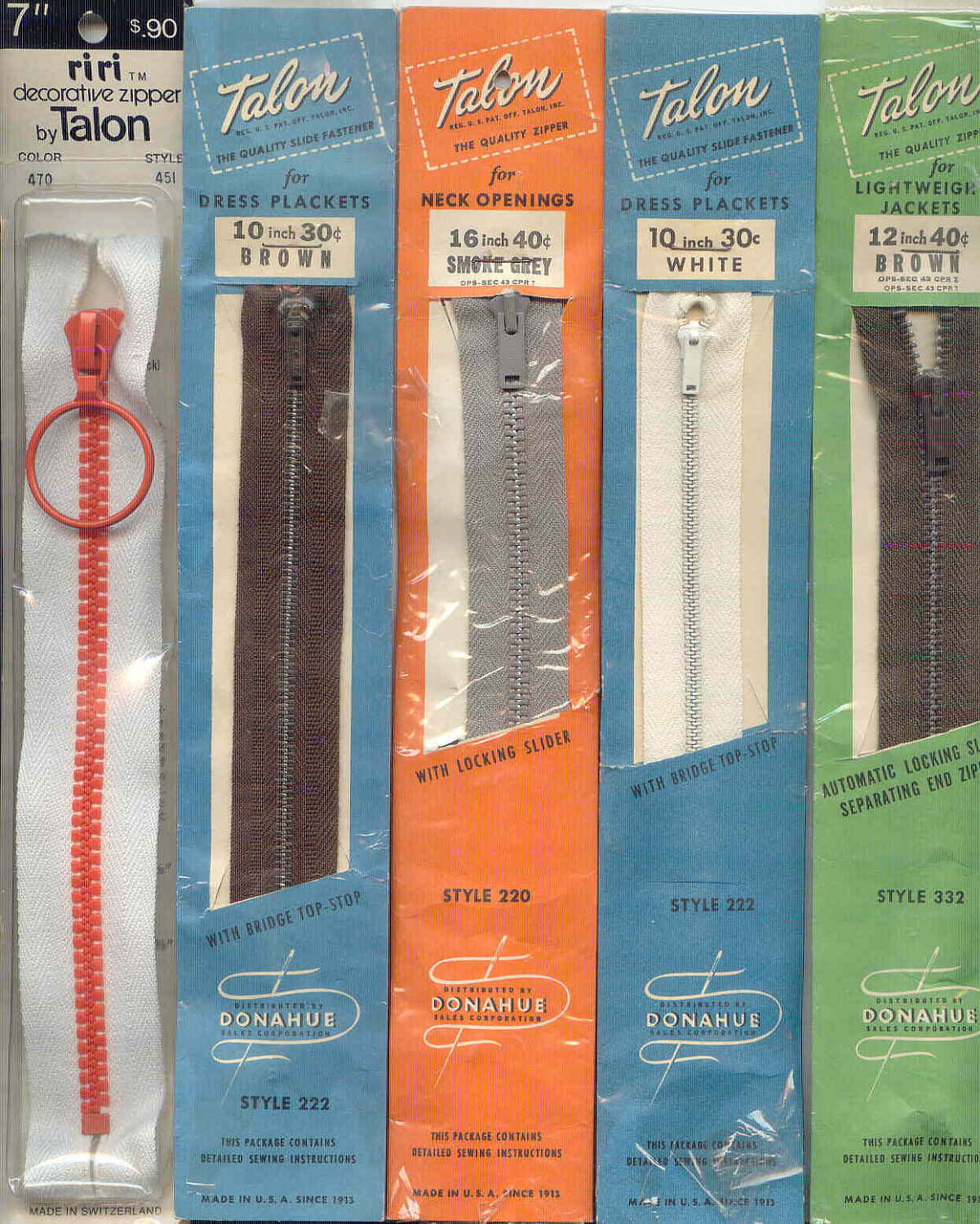If you find me feverishly rubbing a button between my fingers followed by my sniffing said button, please don't be alarmed. I'm just trying to date a garment.
Sure you may look foolish sniffing a button or look like a creep peeking up a dress's undercarriage but these things must be done to date that lovely vintage piece.
So lets talk notions..
Buttons & zippers, they hold up men's pants and keep lady bits covered. They are also very useful in dating.We'll start with the lovely and useful button.
China buttons were produced in the mid 1800's till around the 1930's. They were sturdy and frequently used on men's work clothes. Most often they were white and plain, indicating Victorian era. Most popular are the buttons with stencil-like geometric patterns and calico design, indicating 20th century. China buttons are almost always sew through buttons.
Glass buttons have been around since the 18th century often mixed with other materials. During the 19th century pure glass buttons were produced. Their backsides are a giveaway. If there is a metal shank or post it's 19th century. If there is a glass or "self" shank then its 20th century. If you are confused on whether it's plastic or glass give it a feel, right on your wrist or cheek. It should feel cool. You could also lightly bump the button against your teeth. You should hear a clink.
Metal buttons are the easiest to identify. They can be made of brass, nickel, or aluminum. Occasionally you find them made of pewter, silver or gold. Often they are embossed with a design, i.e. military buttons or picture buttons. When it comes to identification I strongly suggest you get a book or hop on the inter-webs and check out that backside baby. "Picture" buttons often have some sort of writing on the back and when none is present the shape of the shank can give clues to it's age.
- Celluloid is an early plastic popular during the 1900's through the 1920's. They came in all shapes and colors. Sometimes imitating other materials like wood or ivory. To identify a celluloid button run it under hot water. Then sniff. If you get a Vicks vaporrub or mothball scent then you've got yourself a celluloid button.
- Bakelite was used to produce buttons starting in the 1920's. They grew in popularity and were common until the 1940's. They too come in all shapes and sizes but are heavier than Celluloid buttons. To identify bakelite run the button under hot water and sniff If there is a fishy or Formaldehyde like scent chances are its bakelite. The friction test can be done in the field. Vigorously rub the button then smell. It should produce a chemical, Formaldehyde like scent. If you're not use to the smell I suggest the "409" test. Simply spray some 409 on to a q-tip and rub the button. If the tip turns yellow it's bakelite.
- Lucite is a poly-acrylic resin that was used to produce buttons starting in the 1930's. Lucite buttons were most popular from the 1930's on through the 1960's. These buttons could be clear or opaque, various colors, shapes, sizes and could also be carved. Its not unusual to see these buttons embedded with glitter or set with rhinestones. They can also be found in a variety of shapes like flowers or animals. Lucite doesn't have any smell when tested. Usually lighter than Bakelite but heavier than celluloid. Lucite stays pretty clear over time.
Fabric covered buttons or "self-covered" buttons became popular in the 20th century hitting their peak in the 1960's. Fabric covered buttons can be found is any size and most often on outwear. Their shank is probably your best clue as to its age.
On to Zippers.
Zippers came to be in the late 19th century. It made its debut in the 1920's in men's trousers but rarely in women's clothing. Zippers were thought to be too fast and easy to get undone making them vulgar. Oh my. They did however become increasingly popular in children's clothing throughout the 1930's. Women finally won the battle to have zippers in their garments in the late 30's but were concealed by a flap. They were still vulgar, you know. By the 1940's zippers were commonly used, without concealing flaps to boot. Throughout the 1950's and 60's metal zippers are the most commonly used. In 1968 the nylon coil zipper is introduced and became the main zipper used.
Placement of the zipper can be helpful in the dating process. During the 30's and 40's side seam, neck (short high center) and sleeves are the most common placements for a zipper. Neck and side zippers are commonly accompanied with metal snaps. In the 1940's the center back zipper appears. The side seam and full center back zipper maintains it's popularity in the 1950's. In the 1960's a full center back zipper is favored and the side seam becomes used less. The 1970's through to today the center back, half and full, zipper is the preferred placement.
Next time we'll talk fabrics, seams and finishes.
Until then...
xoxo,
Caiti & Jess





I'm a button lover too! What a great summary! I've read much of this before in various places, but a reminder is always great... and what a great reference for zipper dating as well - never knew that!
ReplyDeletewhat great info...and vulgar zippers, hahaha
ReplyDeleteDebbi
-yankeeburrowcreations
I had NO idea that's why zippers were covered... Naughty naughty! lol
ReplyDeleteHappy Wednesday!
~Camille Larson
GGA
http://www.gardengnomearts.com
What an interesting and informative post! Thanks for all the information. My buttons have taken on a whole new meaning!
ReplyDeleteJust dropping by from the Blogging Buddies Team on Etsy so that I can follow you. Invite you to call round to my place soon, too. All the best.
Isobel. www.Coldhamcuddliescalling.blogspot.com